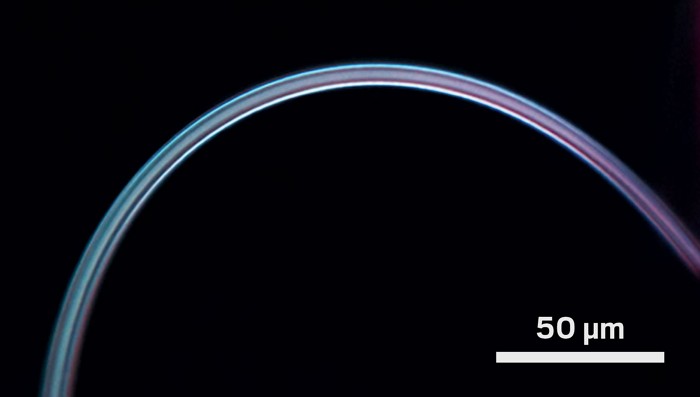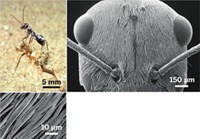Advertisement
Grab your lab coat. Let's get started
Welcome!
Welcome!
Create an account below to get 6 C&EN articles per month, receive newsletters and more - all free.
It seems this is your first time logging in online. Please enter the following information to continue.
As an ACS member you automatically get access to this site. All we need is few more details to create your reading experience.
Not you? Sign in with a different account.
Not you? Sign in with a different account.
ERROR 1
ERROR 1
ERROR 2
ERROR 2
ERROR 2
ERROR 2
ERROR 2
Password and Confirm password must match.
If you have an ACS member number, please enter it here so we can link this account to your membership. (optional)
ERROR 2
ACS values your privacy. By submitting your information, you are gaining access to C&EN and subscribing to our weekly newsletter. We use the information you provide to make your reading experience better, and we will never sell your data to third party members.
Geochemistry
Ice crystals that flex and bend
Researchers have grown perfect microfiber crystals of ice that are surprisingly elastic and able to transmit light with minimal loss
by Emily Harwitz
July 18, 2021
| A version of this story appeared in
Volume 99, Issue 26
Ice—cold, rigid, brittle . . . bendy? Researchers are surprised to find that ice is flexible and elastic at a microscopic scale when grown as tiny, fiber-like crystals (Science 2021, DOI: 10.1126/science.abh3754). Unlike naturally occurring ice, with air bubbles and cracks, the crystals in this study were nearly perfect and able to transmit light with less than 1% loss of intensity. Creating the crystals was tricky. The team, based at Zhejiang University and led by Xin Guo and Limin Tong, used an electric field in a freezing chamber to grow hexagonal crystals ranging from 10 μm down to less than 800 nm in diameter (shown). Most materials can bend when made very thin, like notoriously fragile glass fiber-optic cables. But these microfiber ice crystals can be bent into a minuscule radius of curvature, such that strains and stresses in the surface become incredibly high—almost the theoretical limit. “I found that really surprising,” says Erland M. Schulson, who studies ice at Dartmouth College and was not involved in the research. Scientists could use these microscopic ice crystals to study air pollution by looking at chemicals that stick to their surfaces, the researchers suggest. Even if applications don’t materialize soon, Schulson says, the ability to grow perfect ice crystals is “scientifically interesting.”






Join the conversation
Contact the reporter
Submit a Letter to the Editor for publication
Engage with us on Twitter